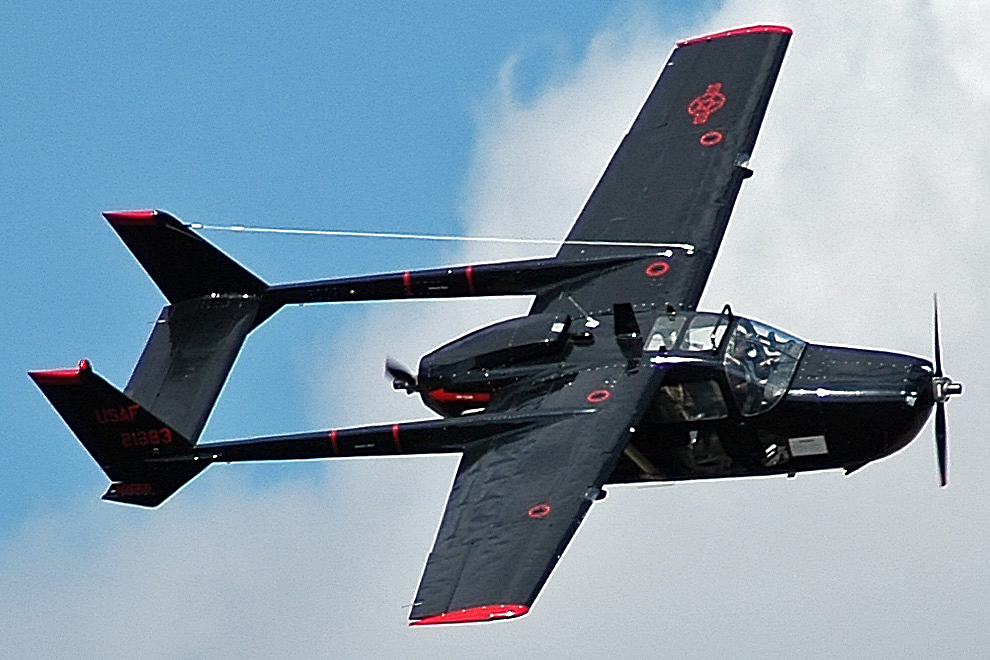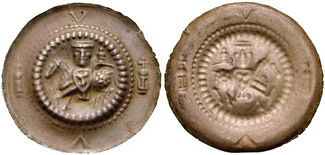|
Sikorsky S-19
The Sikorsky S-19 was a Russian twin engine experimental prototype biplane aircraft built late in 1916 by the Russian Baltic Railroad Car Works while Igor Sikorsky was chief engineer of the aircraft manufacturing division. Design and development The S-19 was a two bay biplane powered by two Sunbeam Crusader water-cooled V-8 engines installed in a push-pull configuration. Arranged as a twin-boom aircraft, it had a large rudder located in the center of the empenage. Two crew members occupied cockpits in the forward-most section of the booms in front of the lower wing and served as pilot and machine gunner. Flight testing revealed sluggish performance and the aircraft was scrapped after a minor crash. See also Gotha WD.3 The Gotha WD.3 (for ''Wasser Doppeldecker'' - "Water Biplane") was a pusher configuration, pusher reconnaissance floatplane built in prototype form in Germany in 1915. Development Since 1913, Gothaer Waggonfabrik, Gotha had been manufacturing a ... Refere ... [...More Info...] [...Related Items...] OR: [Wikipedia] [Google] [Baidu] |
Igor Sikorsky
Igor Ivanovich Sikorsky (russian: И́горь Ива́нович Сико́рский, p=ˈiɡərʲ ɪˈvanəvitʃ sʲɪˈkorskʲɪj, a=Ru-Igor Sikorsky.ogg, tr. ''Ígor' Ivánovich Sikórskiy''; May 25, 1889 – October 26, 1972)Fortier, Rénald"Igor Sikorsky: One Man, Three Careers." ''aviation.technomuses.ca,''1996. Retrieved: October 29, 2008. was a Russian–American"Britannica Concise Encyclopedia" Encyclopædia Britannica, Inc. 2006, p. 1751. [...More Info...] [...Related Items...] OR: [Wikipedia] [Google] [Baidu] |
Biplane
A biplane is a fixed-wing aircraft with two main wings stacked one above the other. The first powered, controlled aeroplane to fly, the Wright Flyer, used a biplane wing arrangement, as did many aircraft in the early years of aviation. While a biplane wing structure has a structural advantage over a monoplane, it produces more drag than a monoplane wing. Improved structural techniques, better materials and higher speeds made the biplane configuration obsolete for most purposes by the late 1930s. Biplanes offer several advantages over conventional cantilever monoplane designs: they permit lighter wing structures, low wing loading and smaller span for a given wing area. However, interference between the airflow over each wing increases drag substantially, and biplanes generally need extensive bracing, which causes additional drag. Biplanes are distinguished from tandem wing arrangements, where the wings are placed forward and aft, instead of above and below. The term is also ... [...More Info...] [...Related Items...] OR: [Wikipedia] [Google] [Baidu] |
Sunbeam Crusader
The Sunbeam Crusader, originally known as the Sunbeam 150 hp, Sunbeam 110 hp or Sunbeam 100 hp (variations on the engine may also have been referred to as Sunbeam 120 hp or Sunbeam 135 hp), was an early British, side-valve, water-cooled, V-8 aero engine first marketed in 1913. Design and development The first aero-engine from Louis Coatalen was the 110 hp, a water-cooled V-8 with side-valve cylinders of 80mm (3.15 in) bore and 150mm (5.9 in) stroke. The later versions of the engine, which had 90mm (3.5 in) bore cylinders, were known as the 150 hp until the Sunbeam naming system labelled it the Crusader in 1917. The 80mm bore versions were produced in limited numbers, mostly for civil use, but later 90mm bore engines had limited success in civil applications, with more than 226 built for military aircraft. Production examples were rated at 150 hp (112 kW) at 2,000 rpm, had a bore of 90mm (3.5 in), stroke of 150mm ... [...More Info...] [...Related Items...] OR: [Wikipedia] [Google] [Baidu] |
Push-pull Configuration
An aircraft constructed with a push-pull configuration has a combination of forward-mounted tractor (pull) propellers, and backward-mounted ( pusher) propellers. Historical The earliest known examples of "push-pull" engined-layout aircraft include a trio of experimental German World War I designs: chronologically comprising the only Fokker twin-engined design of the period, the Fokker K.I from 1915; followed by the unusual Siemens-Schuckert DDr.I triplane fighter design of late 1917, and concluding with the laterally-offset "push-pull" Gotha G.VI bomber prototype of 1918. An early post-World War I example of a "push-pull" aircraft was the Short Tandem Twin: another was the Caproni Ca.1 of 1914 which had two wing-mounted tractor propellers and one centre-mounted pusher propeller. Around 450 of these and their successor, the Ca.3 were built. One of the first to employ two engines on a common axis (tandem push-pull) was the one-off, ill-fated Siemens-Schuckert DDr.I fighter o ... [...More Info...] [...Related Items...] OR: [Wikipedia] [Google] [Baidu] |
Twin-boom Aircraft
A twin-boom aircraft is characterised by two longitudinal booms (extended nacelle-like bodies). The booms may contain ancillary items such as fuel tanks and/or provide a supporting structure for other items. Typically, twin tailbooms support the tail surfaces, although on some types such as the Rutan Model 72 Grizzly the booms run forward of the wing. The twin-boom configuration is distinct from twin-fuselage designs in that it retains a central fuselage. Design The twin-boom configuration is distinct from the twin fuselage type in having a separate, short fuselage housing the pilot and payload. It has been adopted to resolve various design problems with the conventional empennage for aircraft in different roles. Engine mounting For a single engine with a propeller in the pusher configuration or a jet engine, a conventional tail requires the propeller or exhaust to be moved far aft, requiring either a very long driveshaft or jet pipe and thus reducing propulsive efficien ... [...More Info...] [...Related Items...] OR: [Wikipedia] [Google] [Baidu] |
Empenage
The empennage ( or ), also known as the tail or tail assembly, is a structure at the rear of an aircraft that provides stability during flight, in a way similar to the feathers on an arrow.Crane, Dale: ''Dictionary of Aeronautical Terms, third edition'', p. 194. Aviation Supplies & Academics, 1997. Aviation Publishers Co. Limited, ''From the Ground Up'', p. 10 (27th revised edition) The term derives from the French language verb ''empenner'' which means " to feather an arrow". Most aircraft feature an empennage incorporating vertical and horizontal stabilising surfaces which stabilise the flight dynamics of yaw and pitch, as well as housing control surfaces. In spite of effective control surfaces, many early aircraft that lacked a stabilising empennage were virtually unflyable. Even so-called "tailless aircraft" usually have a tail fin (usually a vertical stabiliser). Heavier-than-air aircraft without any kind of empennage (such as the Northrop B-2) are rare, and generally use ... [...More Info...] [...Related Items...] OR: [Wikipedia] [Google] [Baidu] |
Flight Test
Flight testing is a branch of aeronautical engineering that develops specialist equipment required for testing aircraft behaviour and systems. Instrumentation systems are developed using proprietary transducers and data acquisition systems. Data is sampled during the flight of an aircraft, or Atmosphere of Earth, atmospheric testing of launch vehicles and Reusable launch vehicle, reusable spacecraft. This data is validated for accuracy and analyzed before being passed to specialist engineering groups for further analysis to Verification and validation, validate the design of the vehicle. The flight test phase accomplishes two major tasks: 1) finding and fixing any Aeronautics, design problems and then 2) verification and validation, verifying and documenting the vehicle capabilities for government certification or customer acceptance. The flight test phase can range from the test of a single new system for an existing vehicle to the complete development and certification of a ... [...More Info...] [...Related Items...] OR: [Wikipedia] [Google] [Baidu] |
Gotha WD
Gotha () is the fifth-largest city in Thuringia, Germany, west of Erfurt and east of Eisenach with a population of 44,000. The city is the capital of the district of Gotha and was also a residence of the Ernestine Wettins from 1640 until the end of monarchy in Germany in 1918. The House of Saxe-Coburg and Gotha originating here spawned many European rulers, including the royal houses of the United Kingdom, Belgium, Portugal (until 1910) and Bulgaria (until 1946). In the Middle Ages, Gotha was a rich trading town on the trade route ''Via Regia'' and between 1650 and 1850, Gotha saw a cultural heyday as a centre of sciences and arts, fostered by the dukes of Saxe-Gotha. The first duke, Ernest the Pious, was famous for his wise rule. In the 18th century, the ''Almanach de Gotha'' was first published in the city. The publisher Justus Perthes and the encyclopedist Joseph Meyer made Gotha a leading centre of German publishing around 1800. In the early 19th century, Gotha was a bi ... [...More Info...] [...Related Items...] OR: [Wikipedia] [Google] [Baidu] |
Sikorsky Aircraft
Sikorsky Aircraft is an American aircraft manufacturer based in Stratford, Connecticut. It was established by aviation pioneer Igor Sikorsky in 1923 and was among the first companies to manufacture helicopters for civilian and military use. Previously owned by United Technologies Corporation, in November 2015 Sikorsky was sold to Lockheed Martin. History On 5 March 1923, the Sikorsky Aero Engineering Corporation was founded near Roosevelt Field, New York, by Igor Sikorsky, an immigrant to the United States who was born in Kyiv. In 1925, the company name was changed to Sikorsky Manufacturing Company. After the success of the Sikorsky S-38">S-38, the company was reorganized as the Sikorsky Aviation Corporation with capital of $5,000,000, allowing the purchase of land and the building of a modern aircraft factory in Stratford. In 1929, the company moved to Stratford, Connecticut, and it became a part of United Aircraft and Transport Corporation (later United Technologies Corporatio ... [...More Info...] [...Related Items...] OR: [Wikipedia] [Google] [Baidu] |
Military Aircraft Of World War I
A military, also known collectively as armed forces, is a heavily armed, highly organized force primarily intended for warfare. It is typically authorized and maintained by a sovereign state, with its members identifiable by their distinct military uniform. It may consist of one or more military branches such as an army, navy, air force, space force, marines, or coast guard. The main task of the military is usually defined as defence of the state and its interests against external armed threats. In broad usage, the terms ''armed forces'' and ''military'' are often treated as synonymous, although in technical usage a distinction is sometimes made in which a country's armed forces may include both its military and other paramilitary forces. There are various forms of irregular military forces, not belonging to a recognized state; though they share many attributes with regular military forces, they are less often referred to as simply ''military''. A nation's military may f ... [...More Info...] [...Related Items...] OR: [Wikipedia] [Google] [Baidu] |
Russian Inventions
This timeline of Russian Innovation encompasses key events in the history of technology in Russia, from the Grand Duchy of Moscow up to the Russian Federation. The entries in this timeline fall into the following categories: * indigenous inventions, like airliners, AC transformers, radio receivers, television, artificial satellites, ICBMs * uniquely Russian products, objects and events, like Saint Basil's Cathedral, Matryoshka dolls, Russian vodka * products and objects with superlative characteristics, like the Tsar Bomba, the AK-47, and the Typhoon-class submarine * scientific and medical discoveries, like the periodic law, vitamins and stem cells This timeline includes scientific and medical discoveries, products and technologies introduced by various peoples of Russia and its predecessor states, regardless of ethnicity, and also lists inventions by naturalized immigrant citizens. Certain innovations achieved internationally may also appear in this timeline in cases where the ... [...More Info...] [...Related Items...] OR: [Wikipedia] [Google] [Baidu] |

.jpg)
_(6857765499).jpg)




